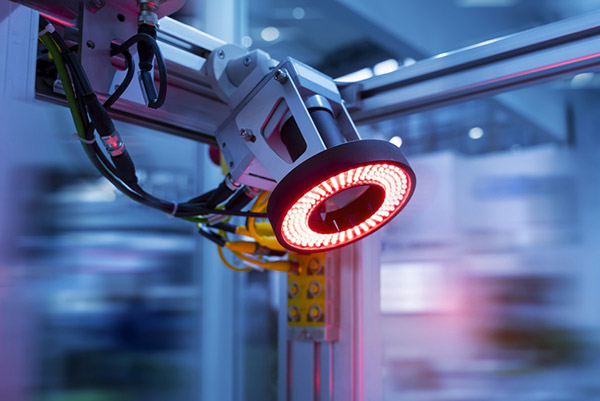An engineer’s checklist for evaluating optical measurement system solutions
The Relevance of an Optical Measurement System in Industrial Applications
Optical measurement systems play a crucial function in industrial applications. They provide high accuracy and promote non-contact measurement, which is necessary for safeguarding sensitive components. These systems enhance operational efficiency and promote high quality control. Their application is not without obstacles. Recognizing their significance and the complexities entailed can illuminate their transformative capacity in modern manufacturing. What are the particular benefits and challenges that these systems present?
Understanding Optical Measurement Systems
Optical measurement systems play an essential duty in numerous commercial applications by providing accurate and accurate information collection. These systems utilize light to gauge physical homes such as dimensions, surface area accounts, and product qualities. The basic parts usually consist of lasers, cams, and sensing units that record and examine light shown from things. By employing strategies such as interferometry and photogrammetry, these systems can discover minute adjustments in shape and dimension, which are vital for quality assurance and product consistency.Furthermore, optical measurement systems are non-contact, allowing them to evaluate delicate or elaborate items without triggering damages. They are versatile, discovering applications in areas like aerospace, automotive, and electronic devices making. The integration of innovative software program for data analysis enhances the capability of these systems, making it possible for real-time surveillance and feedback. As markets advance, the relevance of optical measurement systems remains to expand, sustaining the demand for greater precision and effectiveness.
Secret Benefits of Optical Measurement in Manufacturing
While traditional measurement methods typically include physical contact and can present mistakes, the adoption of optical measurement systems in producing offers significant benefits. These systems utilize non-contact strategies, minimizing the risk of damage to sensitive elements and making certain the integrity of dimensions. Optical measurement gives high precision and accuracy, allowing producers to achieve tight tolerances necessary in affordable markets.Additionally, the rate of optical measurement systems improves efficiency. optical fibre diameter analyser. Fast data purchase enables real-time surveillance, promoting immediate adjustments in manufacturing processes. This effectiveness results in minimized waste and enhanced source allocation.Furthermore, the flexibility of optical systems fits a large range of materials and geometries, making them suitable for different applications. Their ability to integrate effortlessly with automation modern technologies supports Market 4.0 initiatives, promoting smarter manufacturing atmospheres. Overall, the essential advantages of optical measurement contribute considerably to boosting quality assurance and functional performance in modern-day manufacturing setups
Applications of Optical Measurement Solutions
Optical measurement systems play a vital duty in numerous commercial applications, particularly in improving precision during producing processes. They are indispensable to high quality control and guarantee, ensuring that products fulfill rigorous criteria. In addition, these systems support r & d campaigns by supplying precise data for advancement and improvement.
Accuracy in Manufacturing Processes
In modern-day manufacturing, high accuracy is important for making sure product top quality and operational effectiveness. Optical measurement systems supply innovative capacities that greatly improve precision during the manufacturing process. These systems use light and imaging innovations to catch comprehensive measurements of parts, making it possible for producers to attain limited resistances and accurate dimensions. By integrating optical measurement into production workflows, organizations can quickly recognize inconsistencies from specifications, therefore lowering waste and minimizing rework. The non-contact nature of optical dimensions permits for examining fragile or delicate materials without threat of damage. Inevitably, the fostering of optical measurement systems promotes a society of accuracy in production, causing improved efficiency and competition in the marketplace.

Quality Control and Guarantee
Quality guarantee in producing greatly counts on accurate measurement techniques to assure that products meet well established requirements. Optical measurement systems play a crucial duty in this procedure, allowing precise evaluations of dimensions, surface area quality, and various other essential attributes of manufactured goods. By using high-resolution imaging and sophisticated evaluation algorithms, these systems find variances from requirements, ensuring consistency throughout manufacturing. Furthermore, optical dimensions can be non-destructive, maintaining the integrity of click here to read items while assisting in fast evaluations. The assimilation of these systems into high quality control protocols improves effectiveness and lowers waste, inevitably contributing to enhanced item integrity. As markets undertaking for excellence, the fostering of optical measurement modern technologies ends up being increasingly necessary for keeping affordable benefit and consumer satisfaction.

R & D Applications
As industries venture for technology, optical measurement systems have emerged as an essential tool in research study and growth applications. optical fibre diameter analyser. These advanced systems give exact measurements of products and components, allowing designers and researchers to acquire vital understandings into their properties and efficiency. Optical measurement innovations, such as laser scanning and interferometry, assist in the fast prototyping of new styles and the optimization of existing products. By capturing high-resolution data, researchers can recognize defects and assess the influence of different specifications on item capability. Additionally, these systems support interdisciplinary cooperation, bridging voids in between different fields. The assimilation of optical measurement systems into R&D refines inevitably increases development timelines and promotes the development of advanced solutions in numerous commercial industries
Contrasting Optical Measurement to Typical Methods
In comparing optical measurement systems to conventional methods, several essential variables arise, consisting of accuracy and accuracy. In addition, the rate of measurement and cost-effectiveness play substantial roles in establishing the viability of each method for industrial applications. This evaluation highlights exactly how advancements in optical modern technology might supply benefits over standard techniques.
Accuracy and Precision
Optical measurement systems use considerable benefits in precision and accuracy compared to standard measurement techniques. These systems use innovative technology, such as lasers and high-resolution video cameras, to capture dimensional data with marginal error. In comparison, conventional techniques typically depend on mechanical devices that can introduce irregularity due to human mistake or product wear. Optical systems can achieve micrometer-level precision, guaranteeing consistent results also in complicated geometries. Additionally, they supply non-contact measurement, reducing the risk of damaging sensitive components. This capacity is specifically advantageous in industries where resistances are important, such as aerospace and automobile production. The adoption of optical measurement technology improves top quality control and minimizes the likelihood of defects, ultimately improving general manufacturing efficiency.
Speed of Measurement
The benefits of optical measurement systems extend beyond accuracy and accuracy to consist of significant renovations in measurement rate. Traditional measurement techniques frequently need lengthy arrangements and manual calculations, which can decrease production processes. On the other hand, optical systems utilize sophisticated modern technologies such as laser scanning and imaging, allowing quick information procurement and processing. This efficiency permits real-time dimensions, promoting quicker decision-making in manufacturing settings. The ability to catch huge volumes of data quickly enhances throughput and productivity, providing organizations an one-upmanship. Additionally, with lowered measurement times, optical systems lessen downtime connected with examinations, additionally streamlining operations. The speed of measurement in optical systems substantially contributes to total functional performance in industrial applications.
Cost-Effectiveness Evaluation
A complete cost-effectiveness analysis reveals that optical measurement systems frequently give substantial monetary advantages over standard methods. These systems commonly reduce the demand for considerable physical setups, decreasing labor expenses and downtime during measurement procedures. Optical methods can also yield faster outcomes, resulting in enhanced productivity and reduced functional costs. Additionally, the precision offered by optical dimensions reduces the possibility of expensive errors, which can occur from hand-operated interventions and typical methods. Over time, the preliminary investment in optical modern technology is often offset by financial savings in sources, time, and improved item top quality. Industries that adopt optical measurement systems may find themselves not only improving performance yet also achieving a much more positive cost-benefit proportion compared to traditional strategies.
The Role of Automation in Optical Measurement
While lots of industries significantly depend on accuracy and efficiency, automation has emerged as a critical part in enhancing optical measurement processes. By integrating automated systems, organizations can greatly boost measurement precision and decrease human mistake. Automated optical measurement systems use innovative algorithms and sensing units to provide real-time information analysis, promoting quicker decision-making and procedure adjustments.Additionally, automation enables regular measurements throughout various manufacturing runs, guaranteeing that top quality requirements are kept. The scalability of automated optical measurement systems makes them appropriate for diverse applications, from quality assurance in producing to inspection in semiconductor production.Furthermore, these systems can be perfectly integrated into existing production setups, advertising a smooth shift towards much more effective procedures. Generally, the duty of automation in optical measurement is pivotal, using enhanced dependability, decreased labor costs, and boosted operational efficiency, ultimately driving commercial competitiveness.
Difficulties and Considerations in Implementation
Executing optical measurement systems, even with the advantages of automation, provides numerous obstacles and factors to special info consider that organizations need to navigate. One considerable challenge is the combination of these systems into existing operations, which might call for substantial modifications in processes and staff member training. Organizations should additionally address the compatibility of optical measurement modern technologies with existing devices and software.Additionally, the irregularity of products and ecological conditions can affect measurement accuracy, necessitating robust calibration and maintenance protocols. Price is an additional essential consideration, as preliminary financial investments can be considerable, and organizations have to consider these prices versus potential performance gains. Data administration likewise postures difficulties, as the quantity of details created requires efficient systems for storage space, analysis, and interpretation. Finally, guaranteeing compliance with sector criteria and laws adds an additional layer of intricacy to the execution procedure, calling for mindful preparation and implementation.
Future Fads in Optical Measurement Innovation
As markets continue to advance, innovations in optical measurement technology are readied to change their functional landscapes. Emerging patterns show a change towards boosted automation get redirected here and integration with synthetic knowledge, improving the precision and performance of dimensions. Flexible optics is gaining traction, permitting systems to adjust in real-time to differing ecological conditions, consequently decreasing errors. In addition, the miniaturization of optical sensing units is allowing their release in extra small and diverse setups, increasing application opportunities in industries such as aerospace and manufacturing.Additionally, the development of 3D optical measurement strategies is reinventing top quality control processes, supplying even more extensive data evaluation. Technologies in information processing algorithms are also anticipated to simplify the interpretation of intricate dimensions, making understandings extra available. Collectively, these fads mirror a future where optical measurement technology not just improves accuracy yet also boosts operational dexterity, placing industries to much better meet evolving demands.
Regularly Asked Concerns
Exactly How Do Optical Measurement Systems Ensure Data Accuracy?
Optical measurement systems assure information precision through exact calibration, progressed algorithms, and high-resolution imaging. These elements function together to lessen mistakes, improve measurement uniformity, and supply dependable results important for different industrial applications and procedures.
What Is the Common Lifespan of an Optical Measurement System?
The common life-span of an optical measurement system varies, often ranging from five to fifteen years. Factors influencing longevity include usage strength, environmental problems, maintenance practices, and technological improvements that may require upgrades or replacements.
Can Optical Measurement Equipments Be Personalized for Certain Industries?

What Training Is Required for Running Optical Measurement Solutions?
Training for running optical measurement systems usually includes understanding system parts, software application use, calibration techniques, information evaluation, and safety and security protocols. Participants typically take part in hands-on practice and may finish accreditation programs to improve their efficiency.
How Do Environmental Factors Affect Optical Measurement Results?
Ecological factors, such as temperature, moisture, and lighting problems, substantially affect optical measurement results. Variants in these aspects can result in mistakes, influencing the precision and reliability of dimensions taken by optical systems in numerous settings.